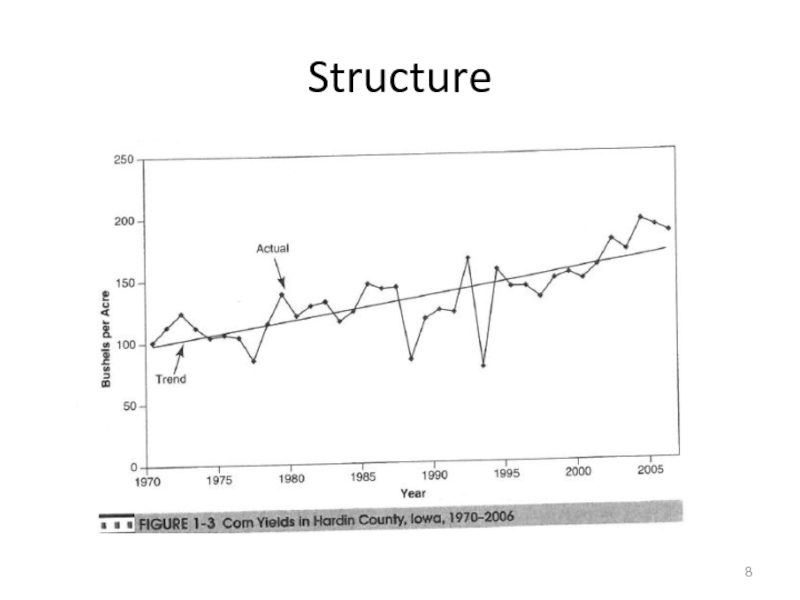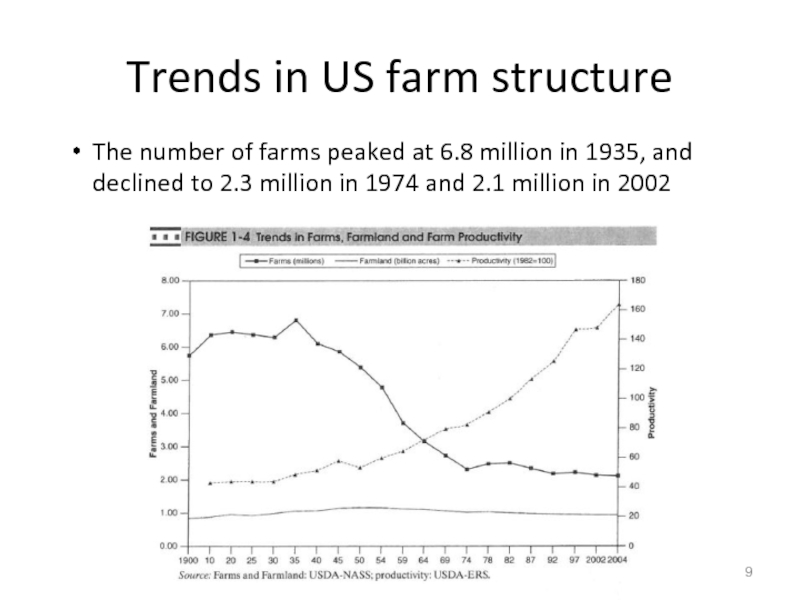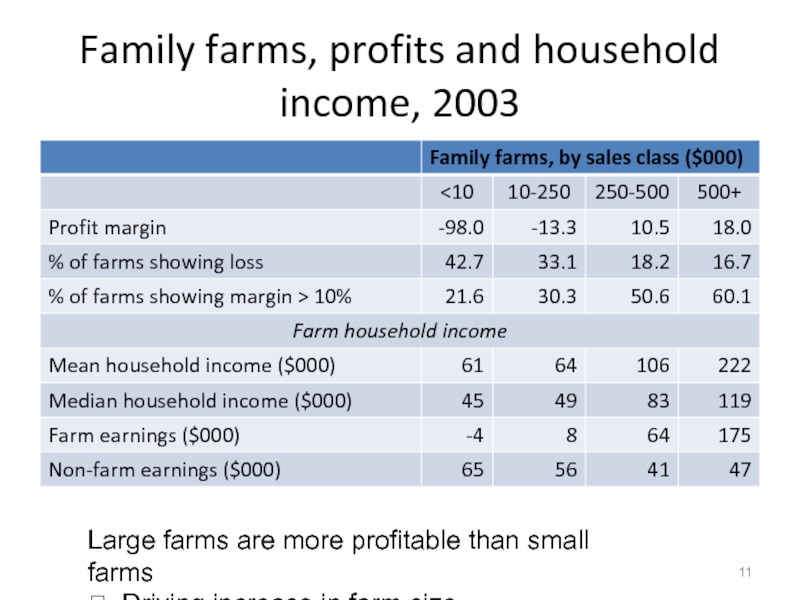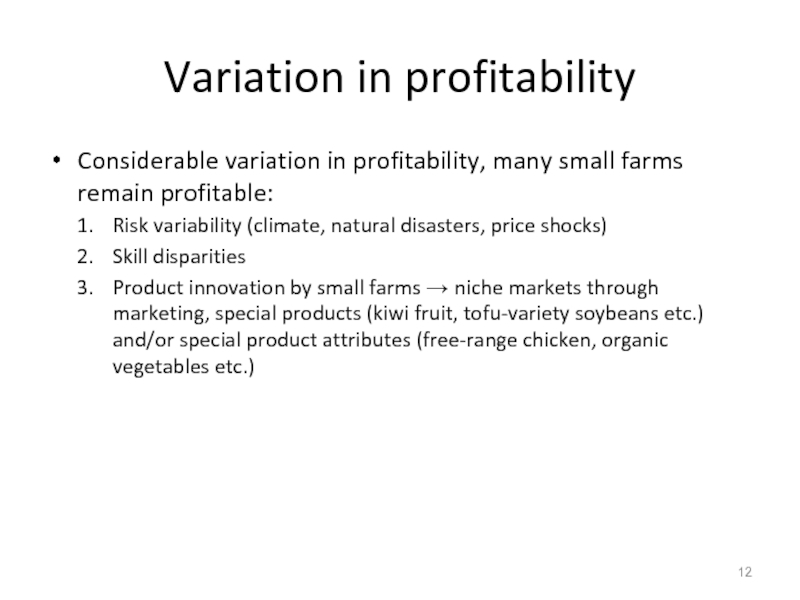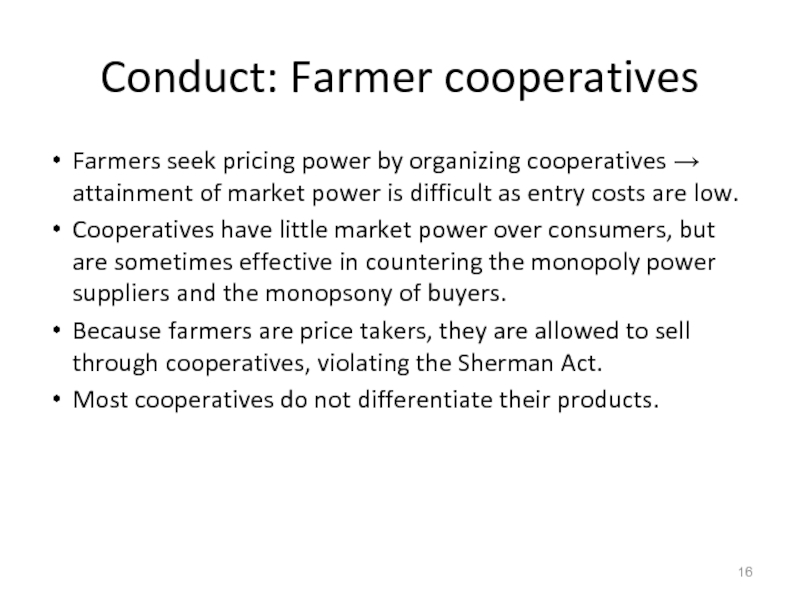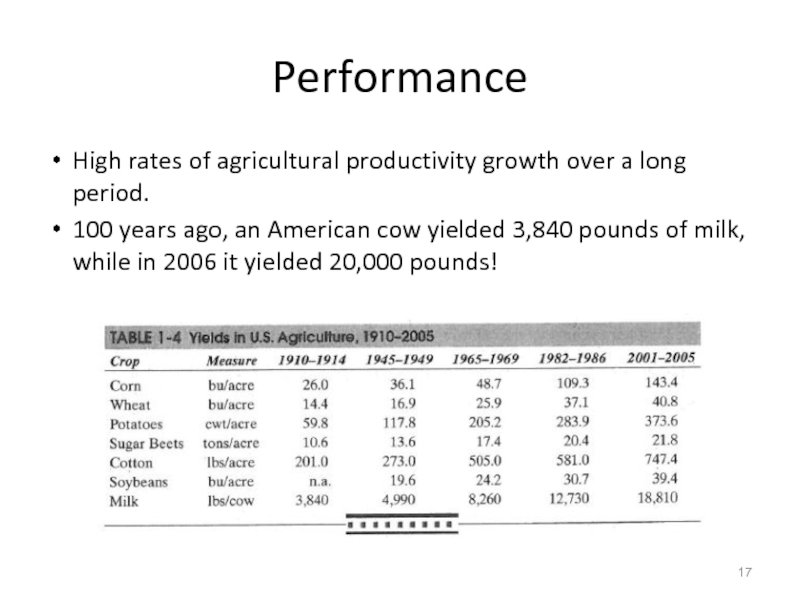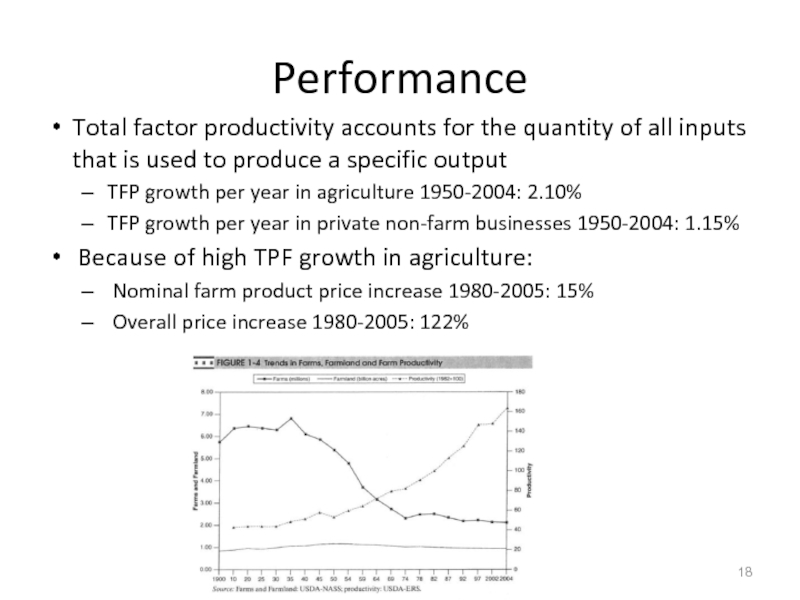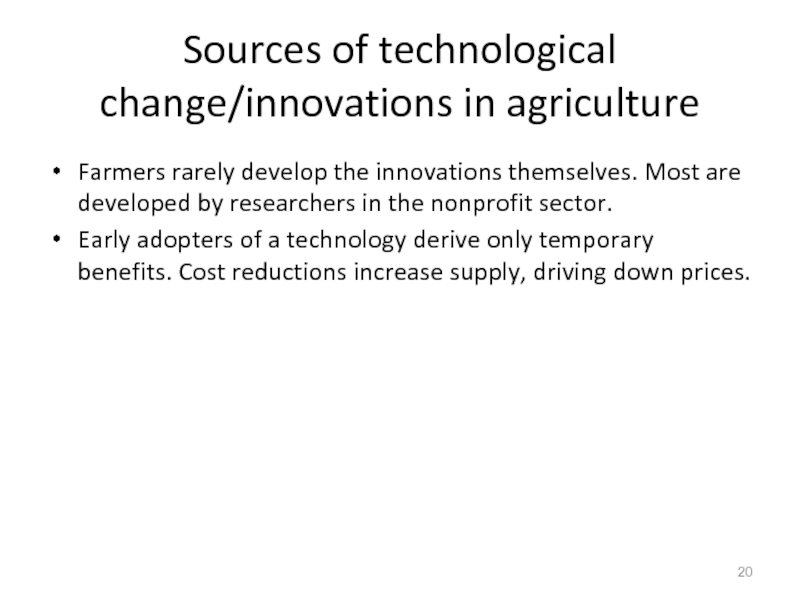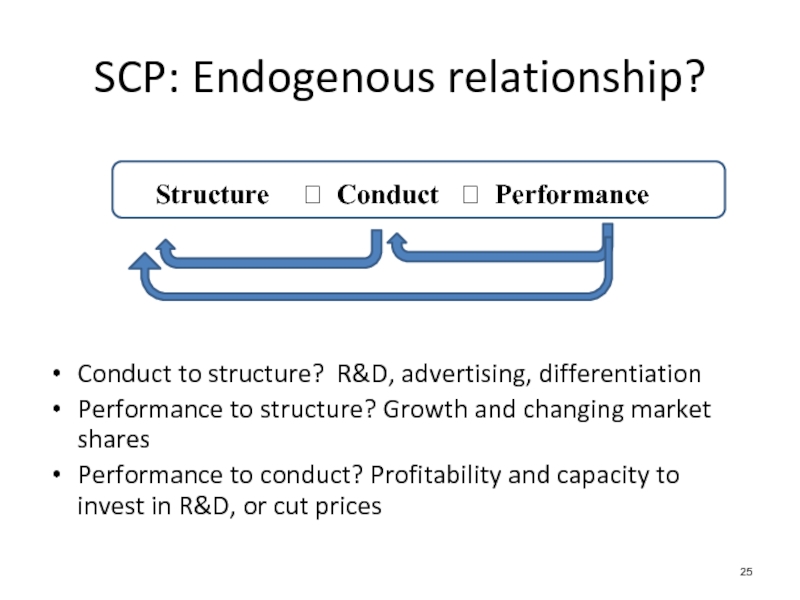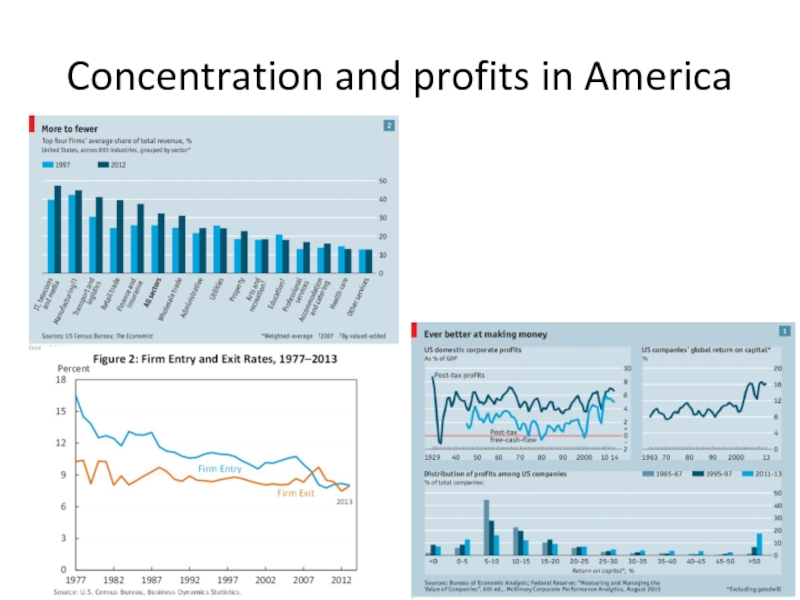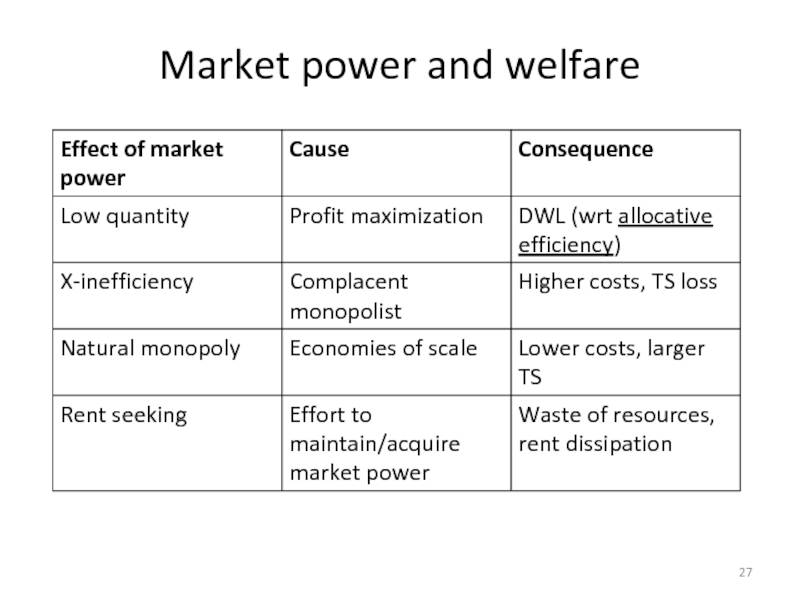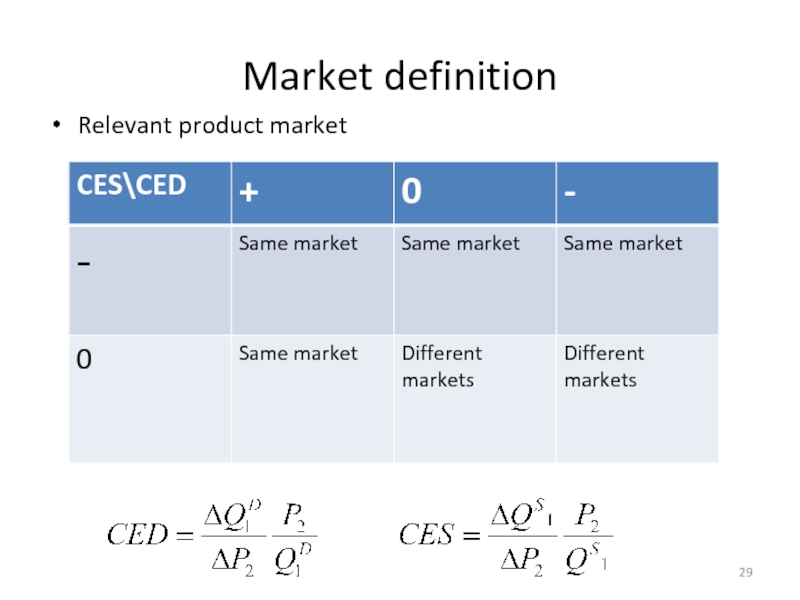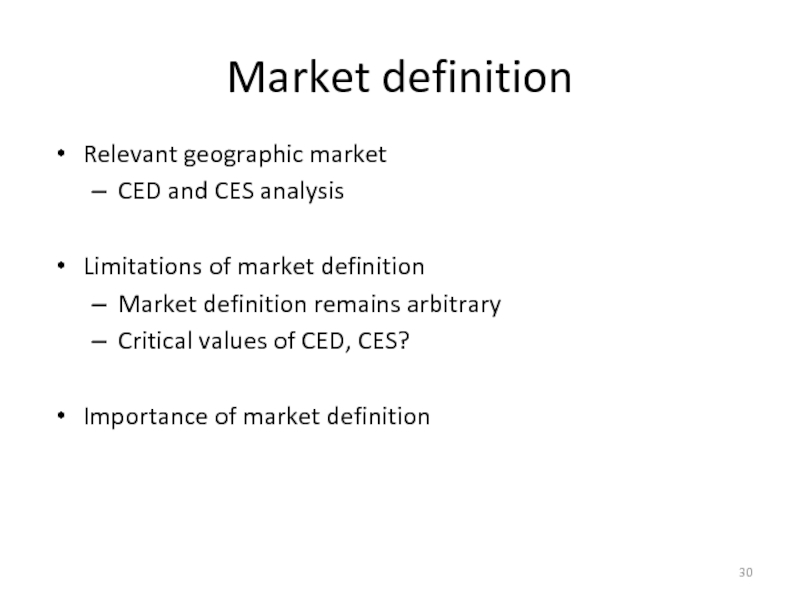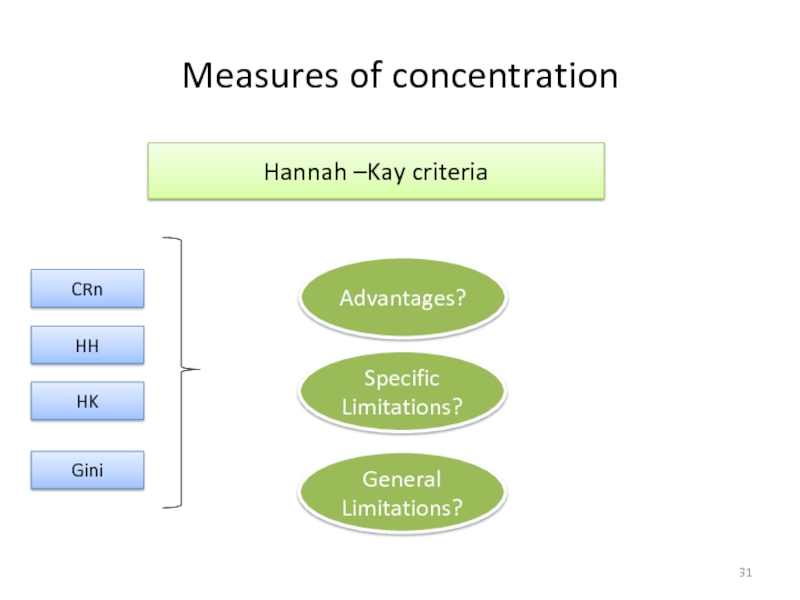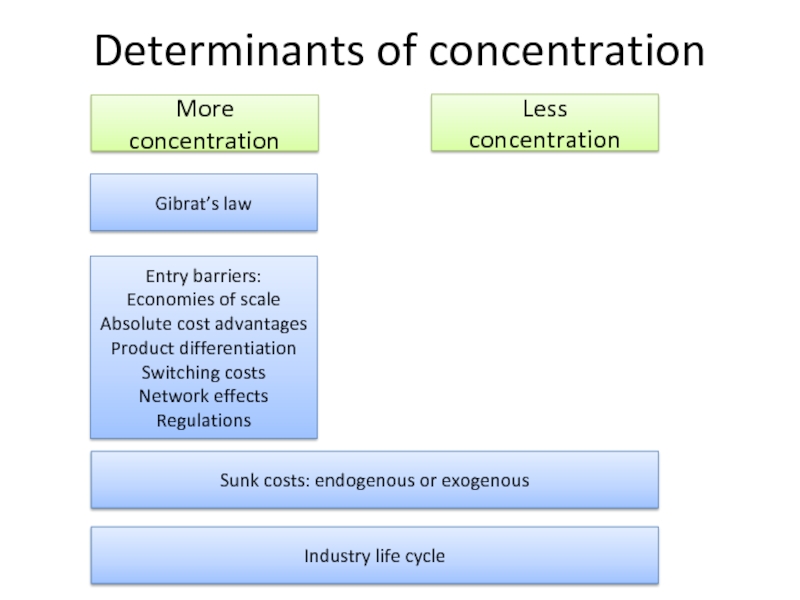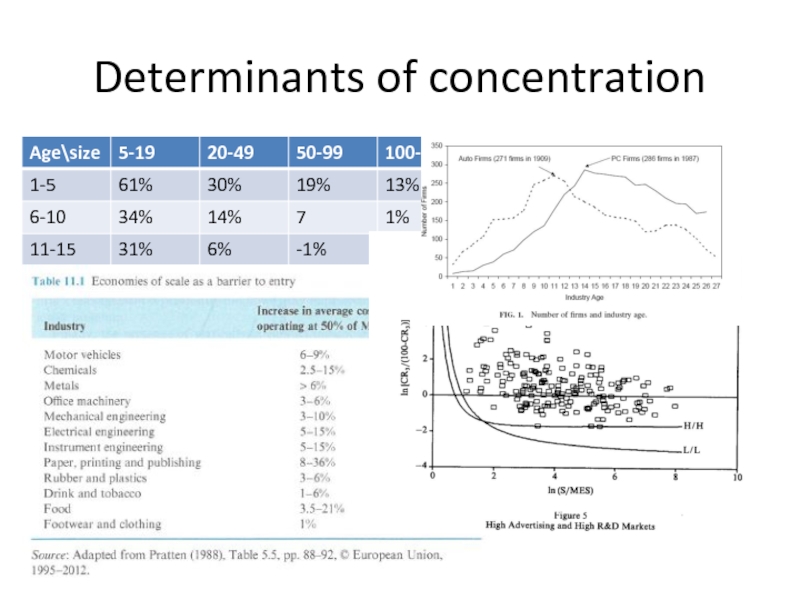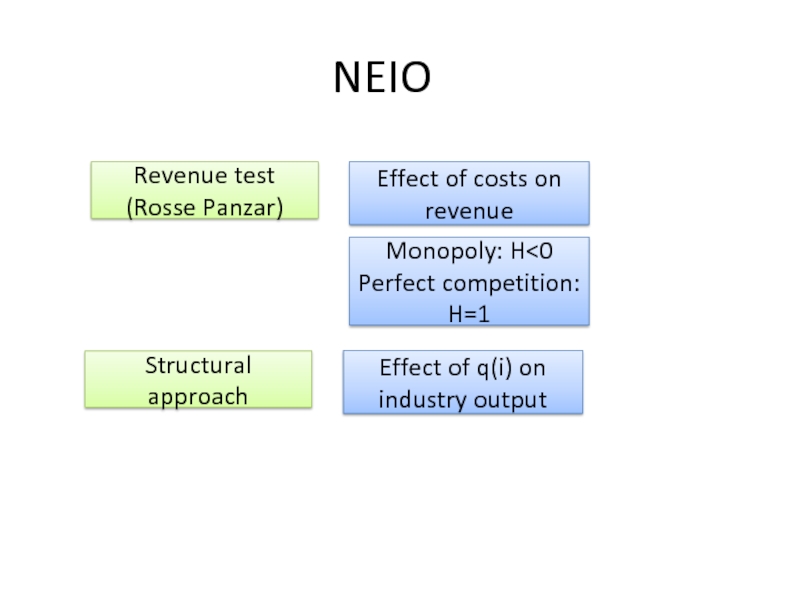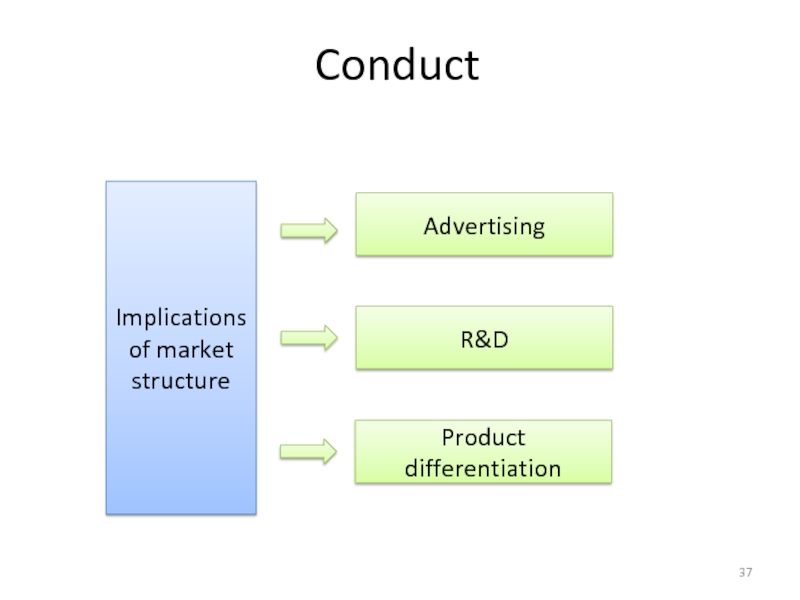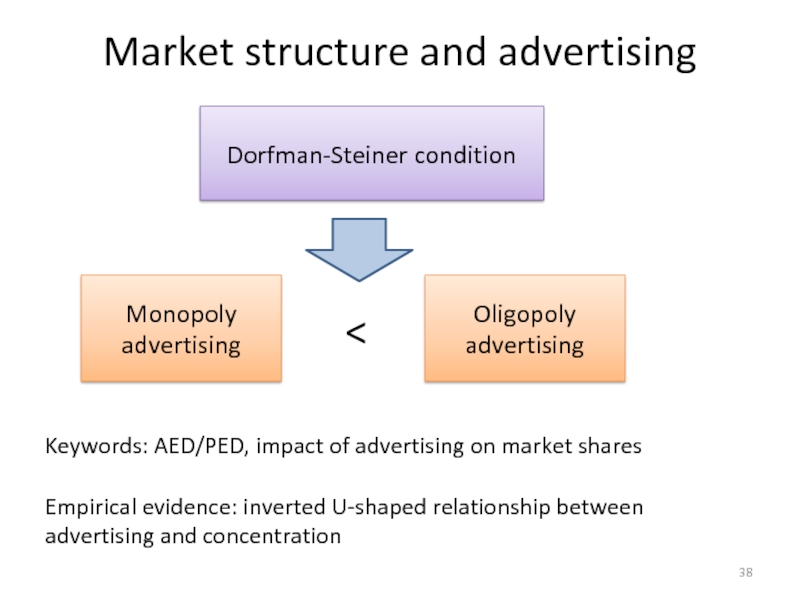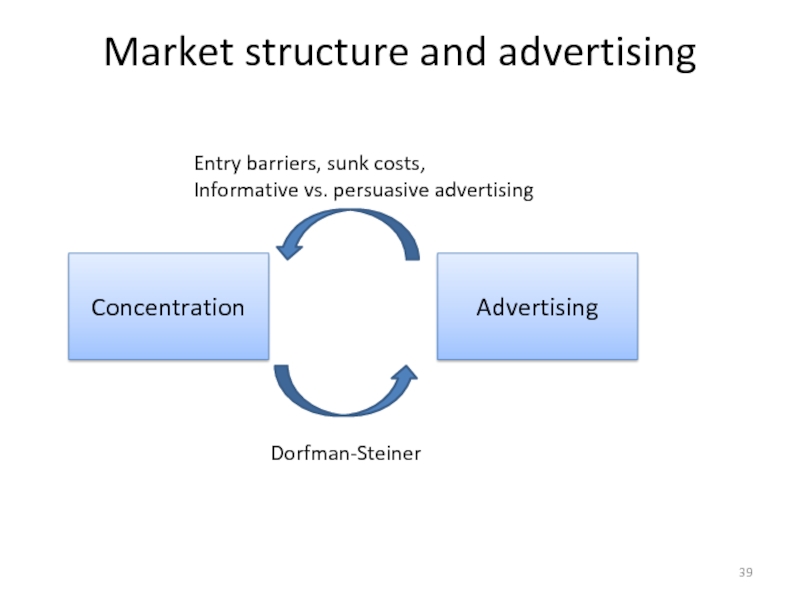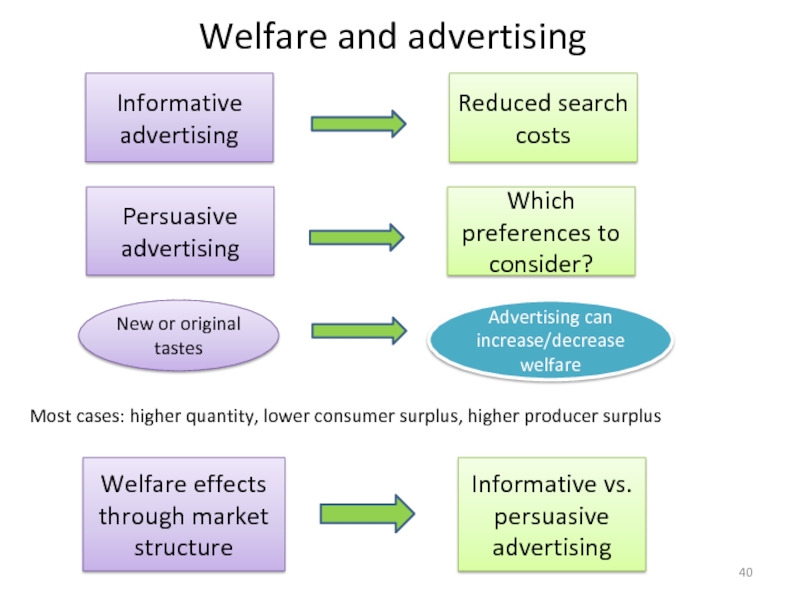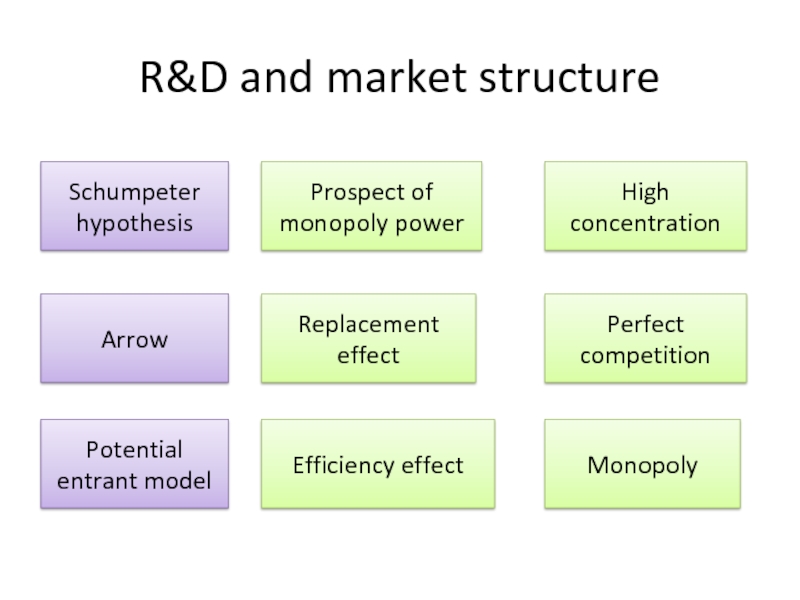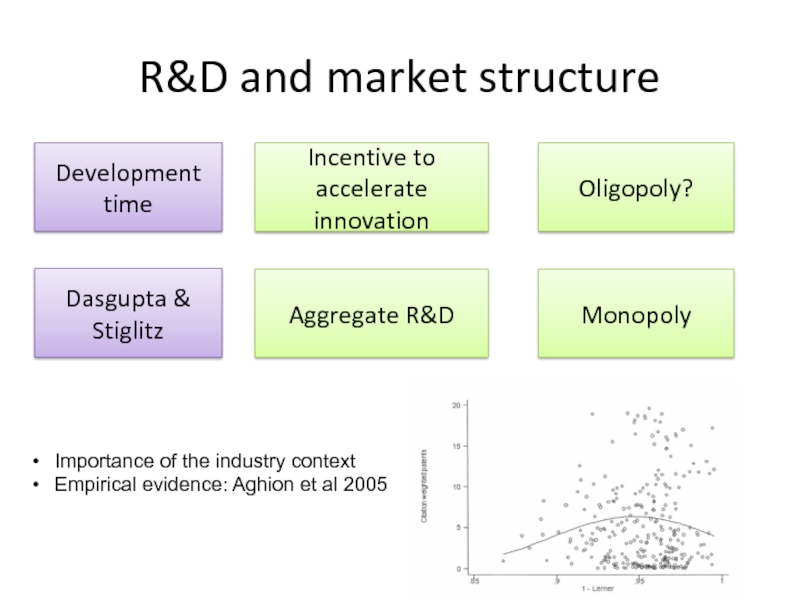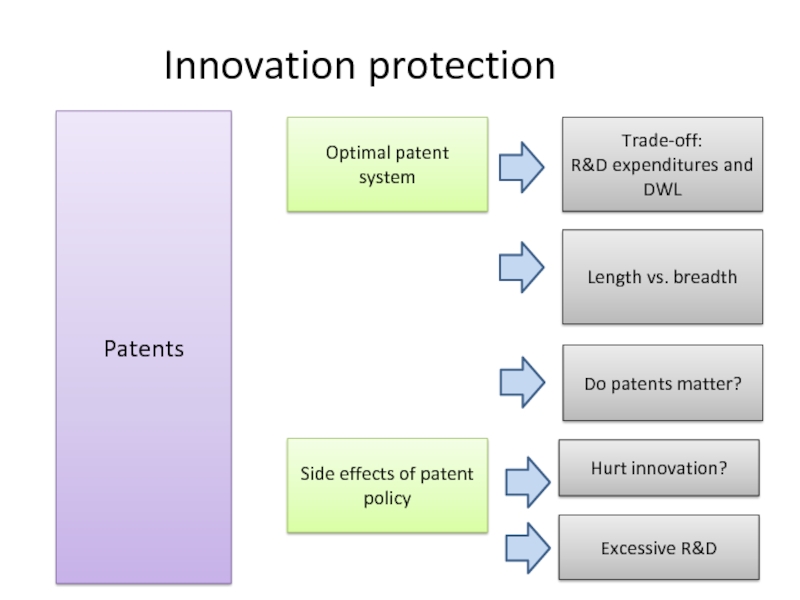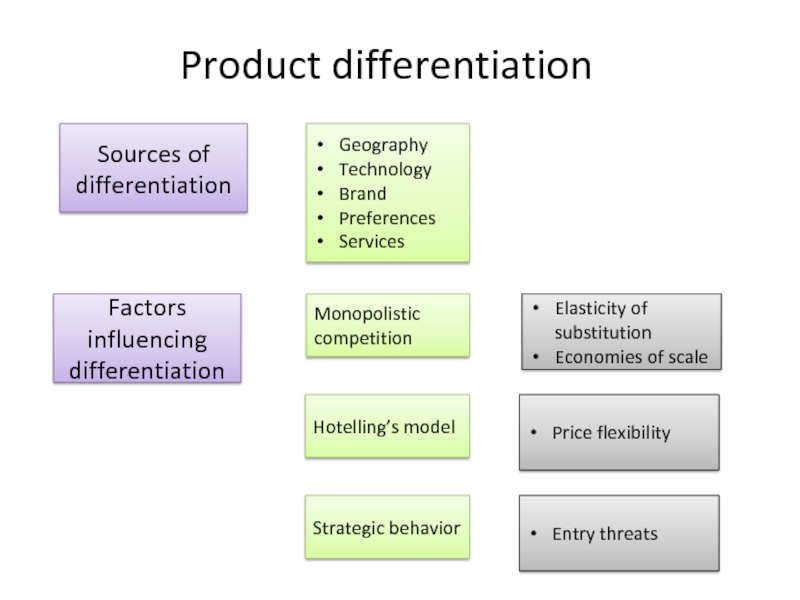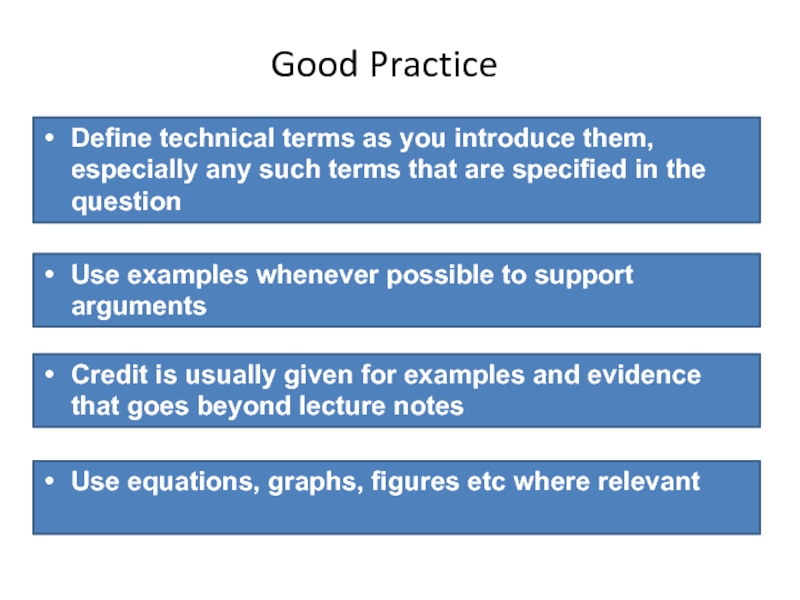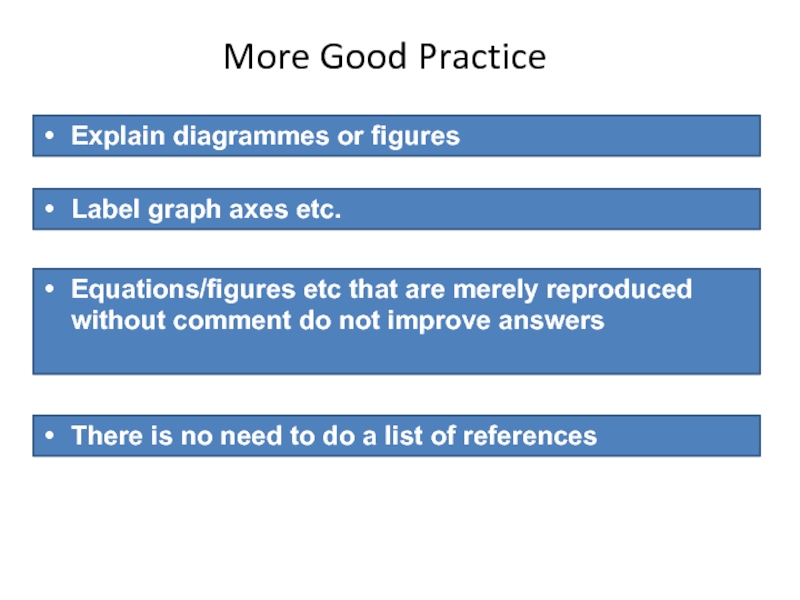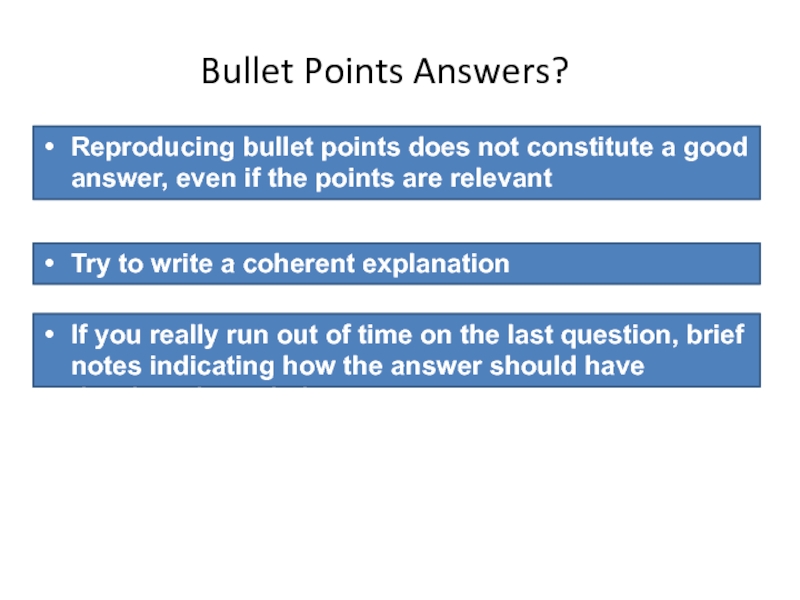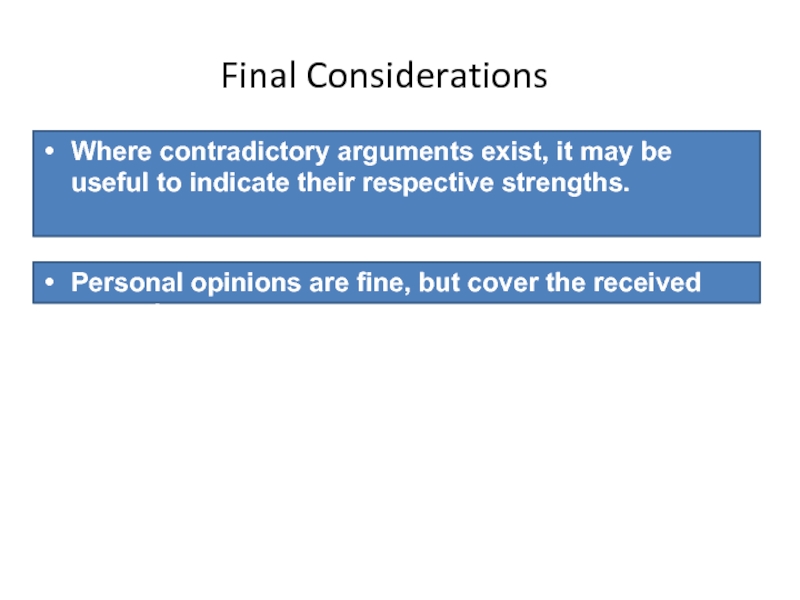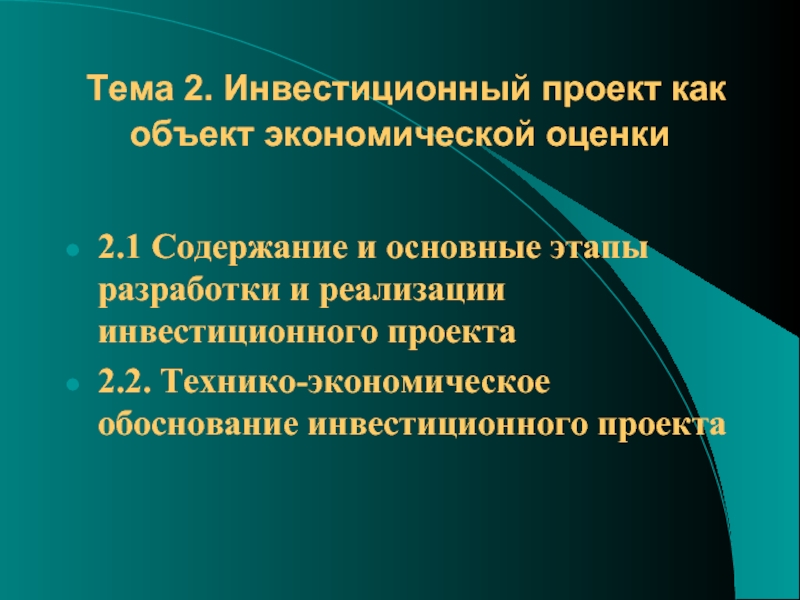- Главная
- Разное
- Дизайн
- Бизнес и предпринимательство
- Аналитика
- Образование
- Развлечения
- Красота и здоровье
- Финансы
- Государство
- Путешествия
- Спорт
- Недвижимость
- Армия
- Графика
- Культурология
- Еда и кулинария
- Лингвистика
- Английский язык
- Астрономия
- Алгебра
- Биология
- География
- Детские презентации
- Информатика
- История
- Литература
- Маркетинг
- Математика
- Медицина
- Менеджмент
- Музыка
- МХК
- Немецкий язык
- ОБЖ
- Обществознание
- Окружающий мир
- Педагогика
- Русский язык
- Технология
- Физика
- Философия
- Химия
- Шаблоны, картинки для презентаций
- Экология
- Экономика
- Юриспруденция
SCP case study: The American agriculture industry презентация
Содержание
- 1. SCP case study: The American agriculture industry
- 2. SCP case study: The American agriculture industry
- 3. Introduction High correlation between the fraction of
- 4. Structure – Supply and demand Farmers must
- 5. Structure – Supply and demand Demand for
- 6. Structure
- 7. Structure Short-run supply is inelastic, but easy
- 8. Structure
- 9. Trends in US farm structure The number
- 10. Trends in US farm structure Sharp restructuring
- 11. Family farms, profits and household income, 2003
- 12. Variation in profitability Considerable variation in profitability,
- 13. Structure: commodity markets Farmers are price takers
- 14. Vertical linkages A large share of farmers
- 15. Conduct: Farmer cooperatives Farmers are price
- 16. Conduct: Farmer cooperatives Farmers seek pricing
- 17. Performance High rates of agricultural productivity growth
- 18. Performance Total factor productivity accounts for the
- 19. Sources of technological change/innovations in agriculture Equipment:
- 20. Sources of technological change/innovations in agriculture Farmers
- 21. Overall performance over time More efficient production
- 22. Revision
- 23. Module structure Structure
- 24. Structure ? Conduct
- 25. Structure ? Conduct
- 26. Concentration and profits in America
- 27. Market power and welfare
- 28. Market power and welfare Application to internet
- 29. Market definition Relevant product market
- 30. Market definition Relevant geographic market CED and
- 31. Measures of concentration Hannah –Kay criteria CRn
- 32. Determinants of concentration More concentration Less
- 33. Determinants of concentration
- 34. Views on SCP Abuse of market
- 35. Structure and profitability
- 36. NEIO Revenue test (Rosse Panzar) Monopoly: H
- 37. Conduct Implications of market structure Advertising R&D Product differentiation
- 38. Market structure and advertising Dorfman-Steiner condition Monopoly advertising
- 39. Market structure and advertising Concentration Advertising Dorfman-Steiner
- 40. Welfare and advertising Persuasive advertising Which
- 41. R&D and market structure Schumpeter hypothesis Prospect
- 42. R&D and market structure Development time Incentive
- 43. Innovation protection Patents Optimal patent system
- 44. Product differentiation Sources of differentiation Geography Technology
- 45. Exam structure 1.5 hour Secton A: Answer
- 46. Do not reproduce prepared essays without regard
- 47. Good Practice Use examples whenever possible to
- 48. More Good Practice Label graph axes etc.
- 49. Bullet Points Answers? Reproducing bullet points does
- 50. Final Considerations Where contradictory arguments exist, it
Слайд 3Introduction
High correlation between the fraction of labor force engaged in agriculture
In poor nations, 50-80% work in agriculture
In rich countries, 2-4% work in agriculture
Unique organization: Farms are mostly family-owned, rather than publicly listed firms.
Farms typically operate as price takers.
Productivity growth in US agriculture has exceeded that in the rest of the economy
Слайд 4Structure – Supply and demand
Farmers must make substantial investments before production
Investments cannot be adjusted in the short run → inelastic short-run supply
Supply can shift unexpectedly due to weather and disease conditions
Слайд 5Structure – Supply and demand
Demand for most farm commodities is price-inelastic:
Unexpected supply or demand shocks lead to sharp price fluctuations
Farmers face price risks in addition to yield risks
Слайд 7Structure
Short-run supply is inelastic, but easy entry makes long-term supply curves
Rapid productivity growth → supply curves have shifted to the right
Demand growth has been limited by low population growth
As a consequence:
Real prices for agricultural commodities have been decreasing
Export markets have become increasingly important
With the rise of exports, farmers face additional risk: exchange-rate risk, foreign macroeconomic risks, etc.
Слайд 9Trends in US farm structure
The number of farms peaked at 6.8
Слайд 10Trends in US farm structure
Sharp restructuring of agriculture towards larger operations
The
Слайд 11Family farms, profits and household income, 2003
Large farms are more profitable
? Driving increase in farm size
Слайд 12Variation in profitability
Considerable variation in profitability, many small farms remain profitable:
Risk
Skill disparities
Product innovation by small farms → niche markets through marketing, special products (kiwi fruit, tofu-variety soybeans etc.) and/or special product attributes (free-range chicken, organic vegetables etc.)
Слайд 13Structure: commodity markets
Farmers are price takers in almost all commodity markets
The
Sources of monopsony power:
High nationwide concentration (e.g. packers of fed cattle CR4 = 80%)
High transport costs (e.g. fed cattle are shipped less than 160 km → regional monopsony even if there are several national buyers)
Perishability (e.g. livestock lose value when they are stored beyond their optimal weight → time-constrained search for better deals)
Specialization (e.g. a buyer’s demand causes a farm to plant a highly specific variety tailored to the buyer’s request → asset specificity)
Asymmetric information (buyers make hundreds of deals per day; sellers make a few deals per year)
Слайд 14Vertical linkages
A large share of farmers rely on long-term contracts with
Long-term contracts are more common when farmers face perishability and transport cost problems (→ fewer potential buyers)
Prices may be set by the contract, and shift the risk price fluctuations
Слайд 15Conduct: Farmer cooperatives
Farmers are price takers, but they buy from
Inputs: machinery, seed, petroleum, pesticide…
Industries processing farm commodities are increasingly concentrated.
Слайд 16Conduct: Farmer cooperatives
Farmers seek pricing power by organizing cooperatives →
Cooperatives have little market power over consumers, but are sometimes effective in countering the monopoly power suppliers and the monopsony of buyers.
Because farmers are price takers, they are allowed to sell through cooperatives, violating the Sherman Act.
Most cooperatives do not differentiate their products.
Слайд 17Performance
High rates of agricultural productivity growth over a long period.
100 years
Слайд 18Performance
Total factor productivity accounts for the quantity of all inputs that
TFP growth per year in agriculture 1950-2004: 2.10%
TFP growth per year in private non-farm businesses 1950-2004: 1.15%
Because of high TPF growth in agriculture:
Nominal farm product price increase 1980-2005: 15%
Overall price increase 1980-2005: 122%
Слайд 19Sources of technological change/innovations in agriculture
Equipment: mechanical power replaced human/animal power;
Chemicals: Chemical fertilizers replaced pesticides, herbicides and fungicides improved the control of weeds and diseases …
Genetics: Plant breeding research created higher-yielding plants with better survival traits; livestock and poultry genetics have caused increased meat yields per animal …
Слайд 20Sources of technological change/innovations in agriculture
Farmers rarely develop the innovations themselves.
Early adopters of a technology derive only temporary benefits. Cost reductions increase supply, driving down prices.
Слайд 21Overall performance over time
More efficient production over time.
Larger farms have tended
The real prices of most food products have decreased over time, which is partly due to process innovation in farming
Слайд 23Module structure
Structure ? Conduct
Market definition
Concentration measures
Concentration determinants
Testing SCP, NEIO
Advertising
R&D
Market power & welfare
Product Differentiation
Слайд 24
Structure ? Conduct ? Performance
The SCP paradigm
The number
Entry conditions
Vertical integration and diversification
Pricing strategies
Advertising
R&D
Differentiation
Collusion
Mergers
Profitability
Growth
Quality of products
Technical progress
Productive efficiency
Слайд 25
Structure ? Conduct ? Performance
Conduct to structure? R&D,
Performance to structure? Growth and changing market shares
Performance to conduct? Profitability and capacity to invest in R&D, or cut prices
SCP: Endogenous relationship?
Слайд 28Market power and welfare
Application to internet monopolies
Does the internet favour such
Are digital monopolies less harmful than traditional monopolies?
Слайд 30Market definition
Relevant geographic market
CED and CES analysis
Limitations of market definition
Market definition
Critical values of CED, CES?
Importance of market definition
Слайд 31Measures of concentration
Hannah –Kay criteria
CRn
HH
HK
Gini
Advantages?
General Limitations?
Specific Limitations?
Слайд 32Determinants of concentration
More concentration
Less
concentration
Sunk costs: endogenous or exogenous
Industry life cycle
Gibrat’s
Entry barriers:
Economies of scale
Absolute cost advantages
Product differentiation
Switching costs
Network effects
Regulations
Слайд 34Views on SCP
Abuse of market
power
Concentration
Profits
Efficiency
Profitability
Firm
Growth
Concentration
SCP:
Chicago:
school
Issue 1: Measurement of profitability
Tobin’s
Issue 2: Testing the two paradigms
Слайд 38Market structure and advertising
Dorfman-Steiner condition
Monopoly advertising
Empirical evidence: inverted U-shaped relationship between advertising and concentration
Слайд 39Market structure and advertising
Concentration
Advertising
Dorfman-Steiner
Entry barriers, sunk costs,
Informative vs. persuasive advertising
Слайд 40Welfare and advertising
Persuasive advertising
Which preferences to consider?
Advertising can increase/decrease welfare
New
Most cases: higher quantity, lower consumer surplus, higher producer surplus
Informative advertising
Reduced search costs
Welfare effects through market structure
Informative vs. persuasive advertising
Слайд 41R&D and market structure
Schumpeter hypothesis
Prospect of monopoly power
Arrow
Replacement effect
High concentration
Perfect competition
Potential
Efficiency effect
Monopoly
Слайд 42R&D and market structure
Development time
Incentive to accelerate innovation
Oligopoly?
Dasgupta & Stiglitz
Aggregate R&D
Monopoly
Importance
Empirical evidence: Aghion et al 2005
Слайд 43Innovation protection
Patents
Optimal patent system
Trade-off:
R&D expenditures and DWL
Length vs. breadth
Side effects of
Hurt innovation?
Excessive R&D
Do patents matter?
Слайд 44Product differentiation
Sources of differentiation
Geography
Technology
Brand
Preferences
Services
Factors influencing differentiation
Monopolistic competition
Elasticity of substitution
Economies of scale
Hotelling’s
Price flexibility
Strategic behavior
Entry threats
Слайд 45Exam structure
1.5 hour
Secton A: Answer ONE question from TWO. ? Two
Section B: Answer ONE question from THREE. ? Two essay questions + one conceptual question
All questions carry equal marks.
Broad questions
Theoretical explanations
Empirical evidence to support your claims
Poor answers
No intuition provided for the theory
No empirical evidence or example
Слайд 46Do not reproduce prepared essays without regard to what the question
Before you answer…
Choose to answer only those questions you fully understand
Your Answer…
The Main Body of argument should follow, with evidence, examples etc used to support statements
Should have a clear structure
The Introduction should act as a signpost to the reader
A (brief) conclusion should end the essay
Слайд 47Good Practice
Use examples whenever possible to support arguments
Define technical terms as
Credit is usually given for examples and evidence that goes beyond lecture notes
Use equations, graphs, figures etc where relevant
Слайд 48More Good Practice
Label graph axes etc.
Explain diagrammes or figures
Equations/figures etc that
There is no need to do a list of references
Слайд 49Bullet Points Answers?
Reproducing bullet points does not constitute a good answer,
Try to write a coherent explanation
If you really run out of time on the last question, brief notes indicating how the answer should have developed may help.
Слайд 50Final Considerations
Where contradictory arguments exist, it may be useful to indicate
Personal opinions are fine, but cover the received views first.

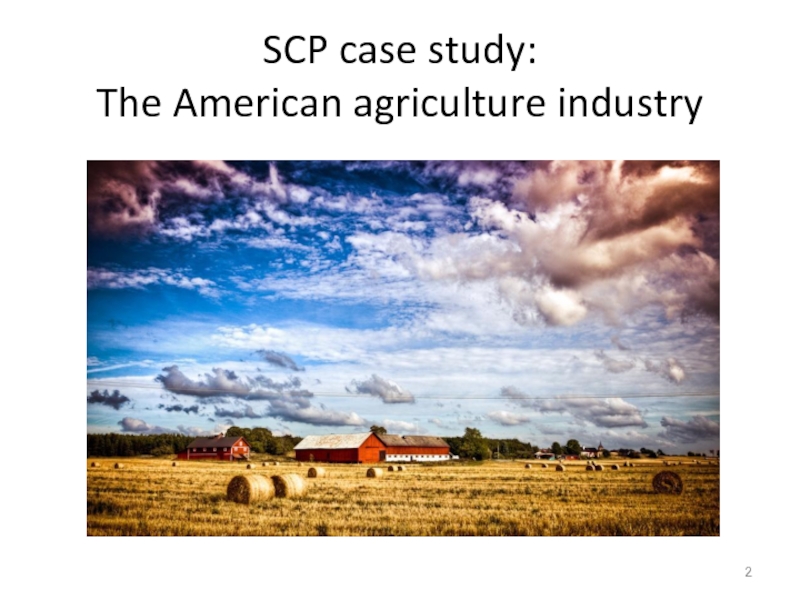

![Structure – Supply and demandFarmers must make substantial investments before production starts [sunk costs]Investments cannot](/img/tmb/3/256829/bffb33676e9bbb4368779e1f44e6f22a-800x.jpg)



